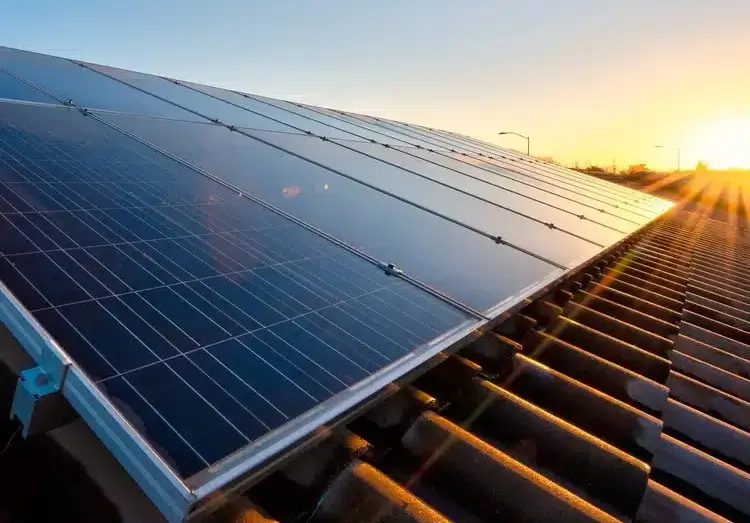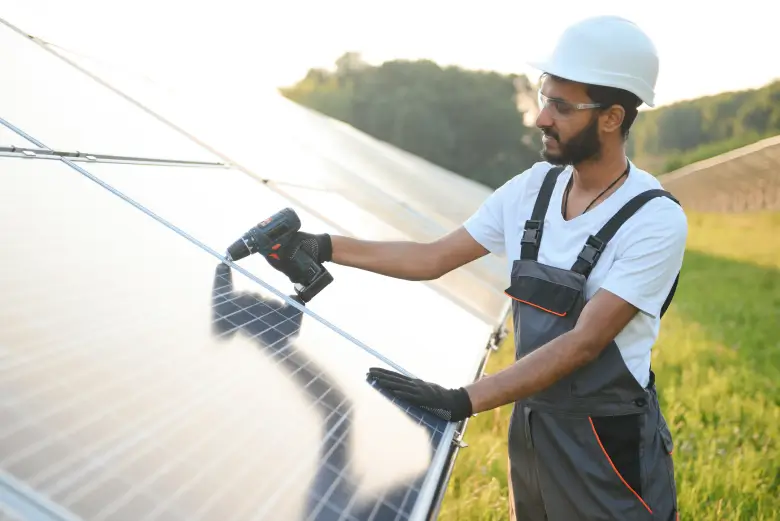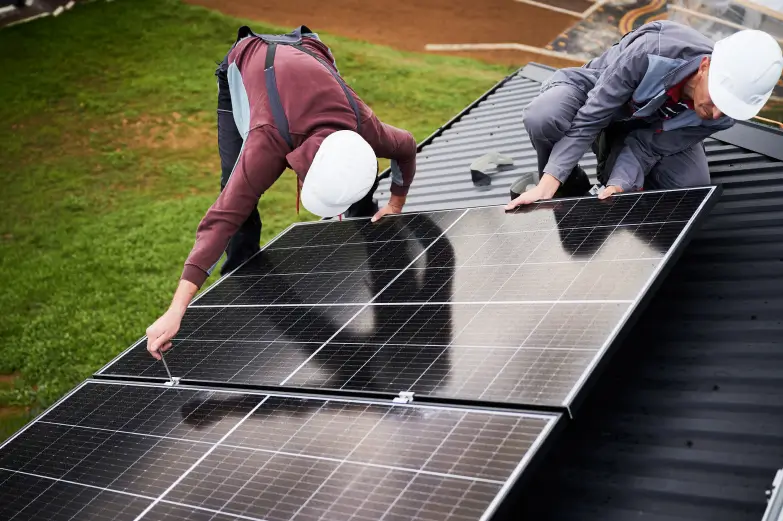
What do Solar panels do?
Solar panels, also referred to as photovoltaic (PV) systems, harness solar energy through photovoltaic cells. These cells can produce electricity even on cloudy days, not requiring direct sunlight to operate.
These cells transform sunlight into usable electricity for households.
What does photoboltaic (PV) mean?
The term photovoltaic (PV) refers to the conversion of sunlight into electricity by a material. It is a combination of the Greek word ‘photo,’ meaning light, and ‘voltaic,’ which pertains to voltage, signifying the generation of electricity from solar energy.
The benefits of Solar PV
There are several benefits of switching to solar PV:
- Solar is a renewable energy source which can be harnessed everywhere in the world, every day
- The more solar energy you generate, the less you’ll be paying for electricity
- Therefore opting for solar energy means you will be reducing your electricity bills.
- Solar energy systems typically don’t require much maintenance, cleaning twice a year should plenty
- Solar PV generates electricity without emitting any greenhouse gases and other pollutants. It also helps towards mitigating climate change and reduces air pollution, making a healthier and cleaner environment for us
- Solar PV is very scalable and modular meaning you can easily expand or modify it to meet your energy needs
- Energy independence is a real benefit of Solar PV, as it allows you to generate your own electricity and reducing your need to get power from the grid
Protecting your solar panels
The best way to protect your solar panels is to install bird protection. This is a robust plastic strip that is attached beneath the solar panels to prevent birds from accessing the wires underneath the solar panels. Brid Protection prevents birds from nesting underneath your solar panels and minimizes the risk of damage to the panels.
Here at Nu-Look Solar, we use EnviroGuard bird protection. It is a welded mesh that is securely attached to the solar panel mesh clips, making it secure from birds nesting under the panels and also from other animals that could destroy the wires.


How are solar panels installed?
Once the area of the array is mapped out on the roof, a few select tiles are removed.
In these gaps, anchors or hooks are attached to the roof rafters. A weatherproof seal is applied around these. The tiles are put back into place, with the hooks coming out below them. A metal frame or rails hooks onto the anchor points. The PV panels are fitted to the frame. The array’s wiring is connected.
Solar Panel FAQ's
Do I have enough space?
The average number of solar panels for a home is 8 to 10 panels, which works out to need around 20m2 of roof space. However, the amount of roof space would depend on how many panels you would need.
Does my roof face the right way?
An unshaded south-facing roof is ideal as it allows maximum performance. East or west-facing roofs still work as they will still generate electricity, but having a north-facing roof is not ideal as your roof will be shaded for most of the day, meaning you are unlikely to generate any electricity.
Do I need permission to install solar panels?
When getting solar panels you will need to be the homeowner or have the homeowner’s permission to install solar panels.
You will not need planning permission to install solar panels.
Can I install solar panels on a flat roof?
It is not ideal to install solar panels on a flat roof.
Solar panels work best on a pitched roof, as the angle gives them the best possible chance of working.